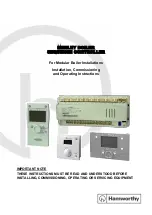Serial Peripheral Interface (S12SPIV5)
S12XS Family Reference Manual, Rev. 1.13
450
Freescale Semiconductor
As long as no more than one slave device drives the system slave’s serial data output line, it is possible for
several slaves to receive the same transmission from a master, although the master would not receive return
information from all of the receiving slaves.
If the CPHA bit in SPI control register 1 is clear, odd numbered edges on the SCK input cause the data at
the serial data input pin to be latched. Even numbered edges cause the value previously latched from the
serial data input pin to shift into the LSB or MSB of the SPI shift register, depending on the LSBFE bit.
If the CPHA bit is set, even numbered edges on the SCK input cause the data at the serial data input pin to
be latched. Odd numbered edges cause the value previously latched from the serial data input pin to shift
into the LSB or MSB of the SPI shift register, depending on the LSBFE bit.
When CPHA is set, the first edge is used to get the first data bit onto the serial data output pin. When CPHA
is clear and the SS input is low (slave selected), the first bit of the SPI data is driven out of the serial data
output pin. After the nth
1
shift, the transfer is considered complete and the received data is transferred into
the SPI data register. To indicate transfer is complete, the SPIF flag in the SPI status register is set.
NOTE
A change of the bits CPOL, CPHA, SSOE, LSBFE, MODFEN, SPC0, or
BIDIROE with SPC0 set in slave mode will corrupt a transmission in
progress and must be avoided.
15.4.3
Transmission Formats
During an SPI transmission, data is transmitted (shifted out serially) and received (shifted in serially)
simultaneously. The serial clock (SCK) synchronizes shifting and sampling of the information on the two
serial data lines. A slave select line allows selection of an individual slave SPI device; slave devices that
are not selected do not interfere with SPI bus activities. Optionally, on a master SPI device, the slave select
line can be used to indicate multiple-master bus contention.
Figure 15-11. Master/Slave Transfer Block Diagram
15.4.3.1
Clock Phase and Polarity Controls
Using two bits in the SPI control register 1, software selects one of four combinations of serial clock phase
and polarity.
1.
n depends on the selected transfer width, please refer to
Section 15.3.2.2, “SPI Control Register 2 (SPICR2)
SHIFT REGISTER
SHIFT REGISTER
BAUD RATE
GENERATOR
MASTER SPI
SLAVE SPI
MOSI
MOSI
MISO
MISO
SCK
SCK
SS
SS
V
DD
Содержание MC9S12XS128
Страница 4: ...S12XS Family Reference Manual Rev 1 13 4 Freescale Semiconductor ...
Страница 58: ...Device Overview S12XS Family S12XS Family Reference Manual Rev 1 13 58 Freescale Semiconductor ...
Страница 150: ...Memory Mapping Control S12XMMCV4 S12XS Family Reference Manual Rev 1 13 150 Freescale Semiconductor ...
Страница 168: ...Interrupt S12XINTV2 S12XS Family Reference Manual Rev 1 13 168 Freescale Semiconductor ...
Страница 194: ...Background Debug Module S12XBDMV2 S12XS Family Reference Manual Rev 1 13 194 Freescale Semiconductor ...
Страница 364: ...Periodic Interrupt Timer S12PIT24B4CV1 S12XS Family Reference Manual Rev 1 13 364 Freescale Semiconductor ...
Страница 396: ...Pulse Width Modulator S12PWM8B8CV1 S12XS Family Reference Manual Rev 1 13 396 Freescale Semiconductor ...
Страница 506: ...Voltage Regulator S12VREGL3V3V1 S12XS Family Reference Manual Rev 1 13 506 Freescale Semiconductor ...
Страница 736: ...Ordering Information S12XS Family Reference Manual Rev 1 13 736 Freescale Semiconductor ...
Страница 737: ......


















